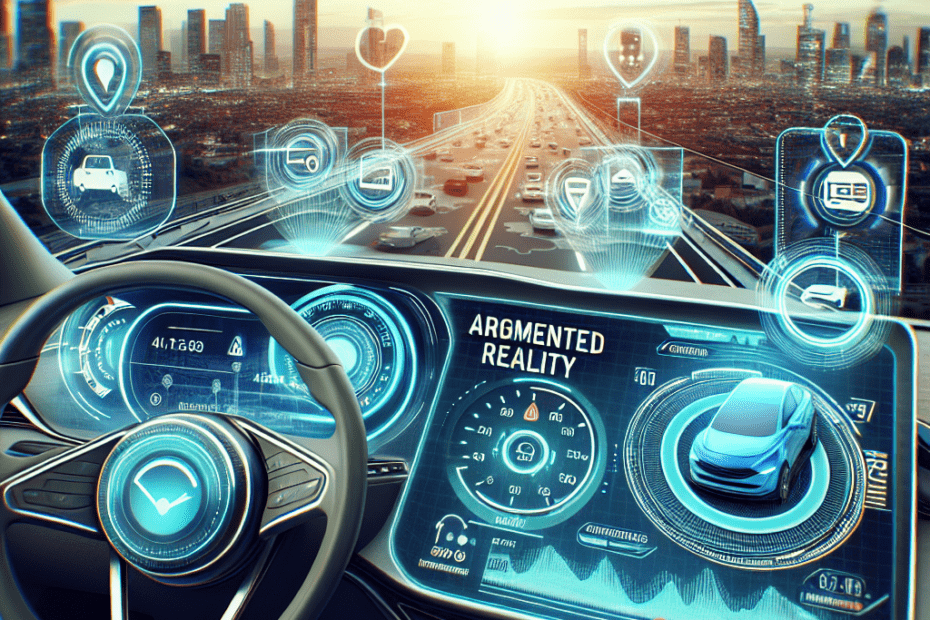Augmented Reality (AR) is revolutionizing many aspects of our daily lives, and the world of automotive technology is no exception. AR car displays are becoming the latest innovation in driving platforms, providing a safer, more interactive, and intuitive experience on the road. Let’s explore how AR dashboards are changing the way we drive and what benefits they bring to modern vehicles.
What Are AR Car Displays?
AR car displays integrate augmented reality technology with a car’s dashboard. Unlike traditional car dashboards, AR dashboards can project crucial information directly onto the windshield or a dedicated screen. This high-tech feature allows drivers to access key data such as speed, navigation directions, and hazard warnings without having to take their eyes off the road.
Benefits of AR Dashboards
AR car displays offer numerous advantages that improve both safety and convenience for drivers:
| Benefits | Description |
|---|---|
| Enhanced Navigation | Real-time directions directly on the windshield for easier and safer driving. |
| Increased Safety | Visual warnings for obstacles, pedestrians, and other potential hazards. |
| Driver Assistance | Alerts for lane departure, speed limits, and traffic signs. |
| Improved Focus | Drivers can keep their eyes on the road with fewer distractions. |
Current Trends and Statistics
According to a report by Allied Market Research, the global AR automotive market is expected to reach $3.6 billion by 2027, growing at a CAGR of 18.4% from 2020 to 2027. This rapid growth indicates a significant shift in how car manufacturers and drivers view the integration of AR technologies within vehicles.
Another survey conducted by J.D. Power shows that 20% of new car buyers rank AR car displays as one of the top features they seek in a new vehicle. This trend is especially pronounced among younger drivers, who have grown up with digital and interactive technologies.
How It Works: The Technology Behind AR Dashboards
AR car displays utilize sophisticated sensors, cameras, and projectors to overlay digital information onto the physical environment. Here is a breakdown of the key components:
- Sensors: Collect data from the surrounding environment to provide real-time updates.
- Cameras: Capture live footage to be used for augmented overlays.
- Projectors: Display the AR visuals on the windshield or dedicated screens inside the car.
- Software: Integrates all data streams to produce a cohesive and interactive interface.
Popular AR Dashboard Features
Modern AR dashboards come equipped with several innovative features designed to make driving easier and safer:
- Heads-Up Display (HUD): Projects critical data like speed and fuel level directly in the driver’s line of sight.
- Augmented Navigation: Shows navigation cues, roads, and landmarks on the windshield.
- Real-Time Hazard Detection: Highlights pedestrians, animals, or debris on the road.
- Lane Departure Warnings: Alerts the driver if they stray from their lane.
The Future of AR Car Displays
As AR technology continues to evolve, the future of AR car displays looks incredibly promising. Car manufacturers are continually investing in this technology to provide more interactive, immersive, and safe driving experiences. With advancements in machine learning and AI, these AR systems are expected to become even more intuitive and responsive.
Moreover, the integration of 5G networks will further enhance the functionality of AR dashboards by enabling real-time communication and data streaming. This will make it possible for vehicles to interact seamlessly with smart city infrastructures and other autonomous vehicles.
Challenges and Considerations
Despite its many advantages, the implementation of AR car displays does come with its own set of challenges:
- Cost: High-end AR technology can add to the overall cost of the vehicle.
- Complexity: Advanced systems require sophisticated software and hardware, demanding rigorous testing and quality assurance.
- Privacy: Collecting and processing real-time data may raise privacy concerns among users.
Key Takeaways
- AR car displays offer enhanced safety, convenience, and interactive driving experiences.
- The market for AR automotive technology is growing rapidly, driven by consumer demand.
- Modern AR dashboards incorporate HUDs, real-time navigation, and hazard detection.
- Future advancements include integration with 5G networks and more responsive AI systems.
- Challenges such as cost, complexity, and privacy concerns need to be addressed.
FAQ
- 1. What are AR car displays?
- AR car displays use augmented reality to project vital driving information onto the windshield or a dedicated screen, helping drivers stay focused on the road.
- 2. How do AR car displays improve safety?
- They provide real-time visual warnings about potential hazards, project navigation cues directly in the driver’s view, and create alerts for lane departures and speed limits.
- 3. What features do modern AR dashboards offer?
- They include heads-up displays, augmented navigation, real-time hazard detection, and lane departure warnings.
- 4. What is the future of AR car displays?
- With advancements in AI and machine learning, future AR dashboards will be more intuitive and seamlessly integrate with smart city infrastructures and autonomous vehicles via 5G networks.
- 5. Are there any challenges to implementing AR car displays?
- Yes, challenges include the high cost of technology, complexity in system design and testing, and potential privacy issues related to data collection.
AR car displays are undoubtedly setting new standards in automotive technology, making driving safer, smarter, and more interactive. As the technology continues to mature, we can expect even more groundbreaking innovations in the near future.
